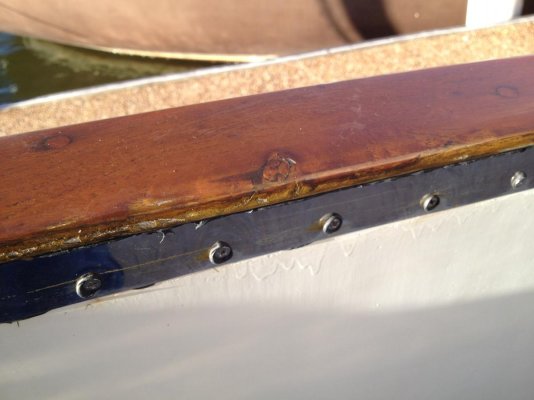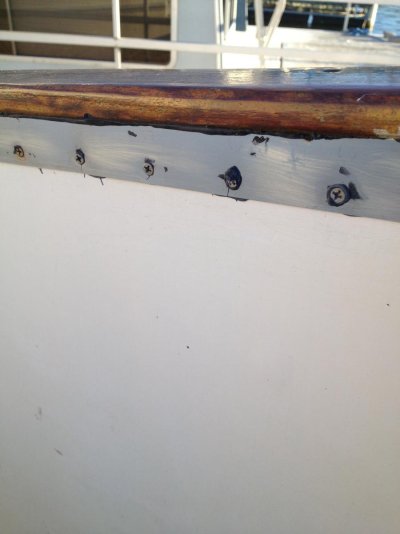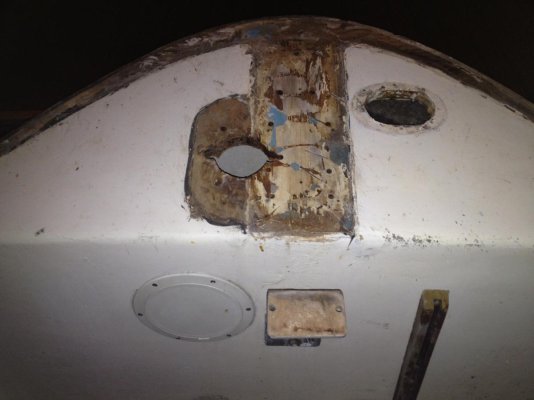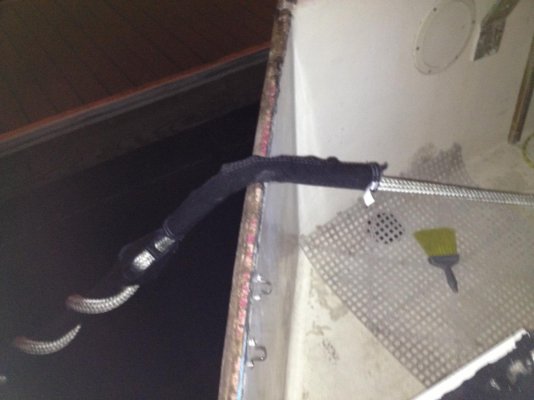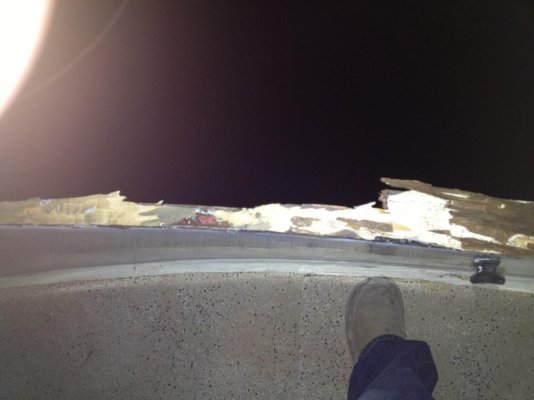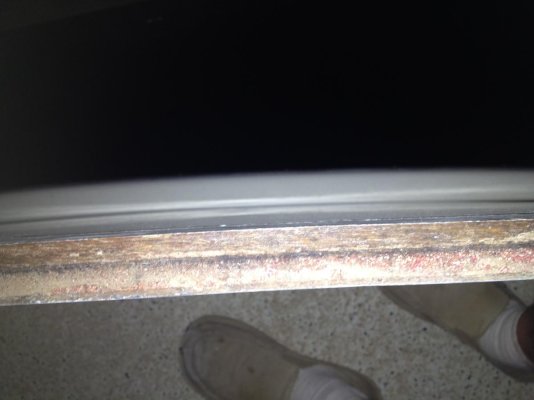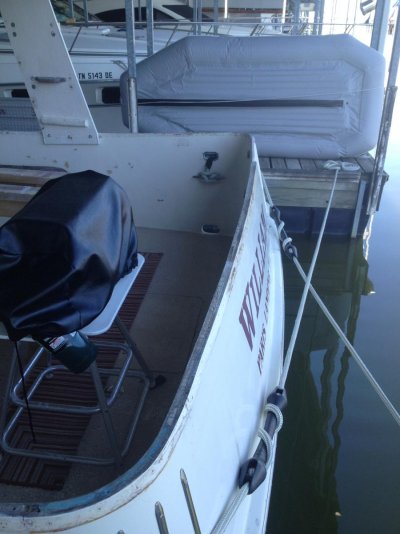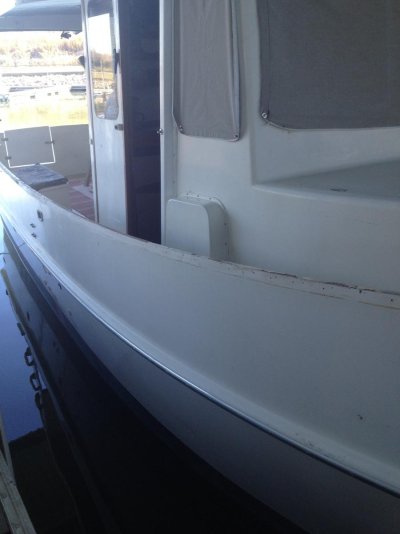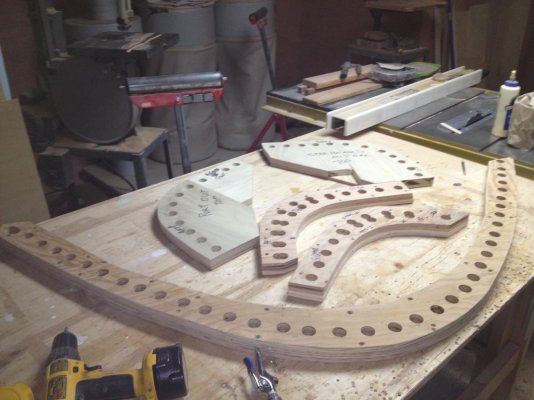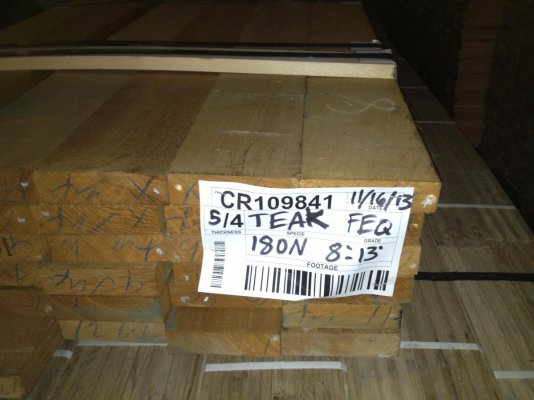Pack Mule
TF Site Team
- Joined
- Jan 24, 2013
- Messages
- 3,749
- Location
- USA
- Vessel Name
- Slo-Poke
- Vessel Make
- Jorgensen custom 44
I plan on replacing my entire cap rail this winter .Mine is shot and not done very well.I 'm planning on using Burmese teak. It has mahogany on it now and most of near the end grain joints is rotten.Also if you look at the pic someone put a 1" tall stainless steel strap on the inside with a SCREW every 2" !!!!.I don't what they were trying to achieve but I have taken out all 600 of them and caulked the holes and put new screws in just for a temporary fix.
This my plan for new cap rail and I'm open for suggestions:
1.move the boat into covered slip so I can keep dry.
2.remove all mahogany cap rail , all 600 band screws and stainless steel band
3. epoxy all holes from the 600 screws and any holes left from the where the cap rail was screwed down from top and into the side of the hull
4. Plane 5/4 teak to 1-1/8" thick or whatever it takes to clean it up
5.rip pieces off the edge about 7/8" wide
6 .clamp these to each side of the hull to deck joint with 3m 5200 giving me about 3"of width with 7/8' wide teak on each side of hull only using screws where I have to or no screws at all.
7, make the cap rail 4" wide x 1-1/8" thick giving me about 1/2" overhang on each side and round over the edges.
8.screw the cap rail down using 3m 4200 and only screw the rail down only to the teak on each side and not to the hull but put 4200 on the full 3" width.
I thought about putting a drip groove on the bottom of the cap rail on the overhang part about 1/8" wide and 1/8" deep to keep water from trying to suck in under the rail.
Thanks for looking at this and I would love to hear your ideas.
This my plan for new cap rail and I'm open for suggestions:
1.move the boat into covered slip so I can keep dry.
2.remove all mahogany cap rail , all 600 band screws and stainless steel band
3. epoxy all holes from the 600 screws and any holes left from the where the cap rail was screwed down from top and into the side of the hull
4. Plane 5/4 teak to 1-1/8" thick or whatever it takes to clean it up
5.rip pieces off the edge about 7/8" wide
6 .clamp these to each side of the hull to deck joint with 3m 5200 giving me about 3"of width with 7/8' wide teak on each side of hull only using screws where I have to or no screws at all.
7, make the cap rail 4" wide x 1-1/8" thick giving me about 1/2" overhang on each side and round over the edges.
8.screw the cap rail down using 3m 4200 and only screw the rail down only to the teak on each side and not to the hull but put 4200 on the full 3" width.
I thought about putting a drip groove on the bottom of the cap rail on the overhang part about 1/8" wide and 1/8" deep to keep water from trying to suck in under the rail.
Thanks for looking at this and I would love to hear your ideas.

